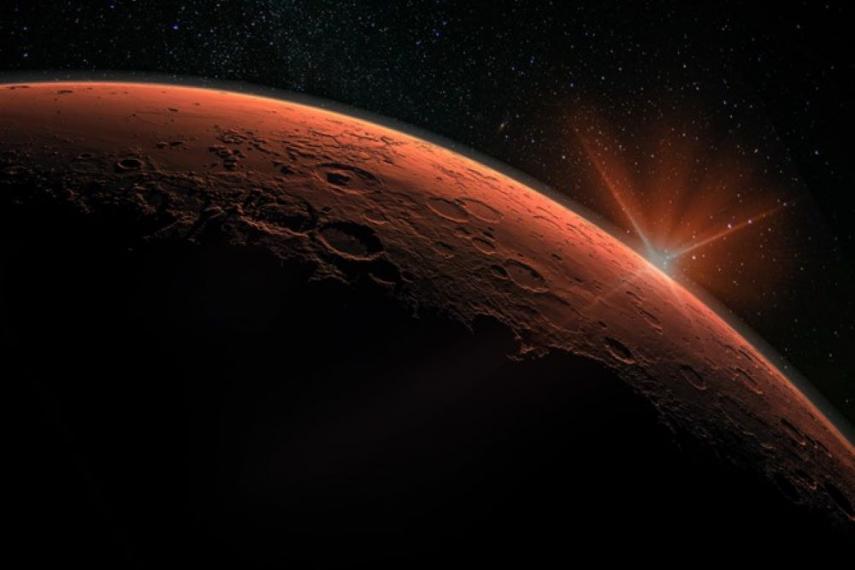Learning from the Longest-active Mars Rover

Data from the Mars Exploration Rover Opportunity give insights into a different environment on the Red Planet.
On January 25, 2004, the Mars Exploration Rover Opportunity landed on the Red Planet. Its mission: to traverse the terrain and determine where water might have been present, allowing researchers to ultimately assess the plausibility of past life on Mars. The rover was equipped with the Alpha Particle X-Ray Spectrometer (APXS), an instrument designed at the Max-Planck-Institute for Chemistry by a team that included Dr. Ralf Gellert, now a University of Guelph physics professor and lead scientist for the APXS since 2005, which uses radiation to measure the chemical composition of Mars surface materials.
Learning from Long-term Data
Gellert and Dr. Scott VanBommel, a University of Guelph alumnus (VanBommel completed his BSc, MSc, and PhD at U of G; now based at Washington University in Saint Louis; and a NASA Participating Scientist on the latest Mars rover, Perseverance) and their collaborators recently delved deep into the last data collected by the Opportunity rover.
The rover began exploring a crater on Mars called the “Endeavour” on August 9, 2011. Although Opportunity was only meant to survive 90 Earth days, it ended up being NASA’s longest-active rover, remaining operational for 14 years, and the first to complete a marathon on another planet.
Ancient Rock Origins
The team used data from the Opportunity to examine the western rim of the Endeavour crater and better understand the geological history of this region. The researchers assessed the geological context and compared the Opportunity’s observations to rocks from craters here on Earth.
Evidence of Water, Evidence of Life
The data showed two geologic formations along the Endeavour crater’s rim, characterized by different types of sedimentary rocks that resulted from impact events prior to and after the formation of the Endeavour crater. The researchers also found that the amount of magnesium, calcium, and chlorine on the rock surfaces hinted at the presence of salts, deposited via flowing water. Presence of water furthermore could indicate past conditions were amenable to microbial life.
“By examining the data gathered from the Opportunity, we have a small window into the history of Mars, helping us piece together more information regarding its paleoclimate and evolution to present day around Endeavour crater,” says VanBommel. “We have shown that water and salts moved through the area at one point.”

A photo taken by NASA’s Mars Exploration Rover Opportunity shows “Pillinger Point,” on the western rim of Endeavour Crater. NASA/JPL-Caltech/Cornell Univ./Arizona State Univ.
This work was supported by NASA, including via the Mars Exploration Rover Participating Scientist Program and Planetary Science Research Programs. Rover operations were led by the Jet Propulsion Laboratory, California Institute of Technology, under a contract with NASA. The work at Guelph was supported by a CSA grant for the operation of the APXS on the MSL Curiosity rover.
Mittlefehldt DW, Gellert R, VanBommel S, Arvidson RE, Ashley JW, Clark BC, Crumpler LS, Farrand WH, Golombek MP, Grant JA, Morris RV. Geology and Geochemistry of Noachian Bedrock and Alteration Events, Meridiani Planum, Mars: MER Opportunity Observations. J. Geophys. Res. Planets. 2021 Aug 27. doi: 10.1029/2021JE006915